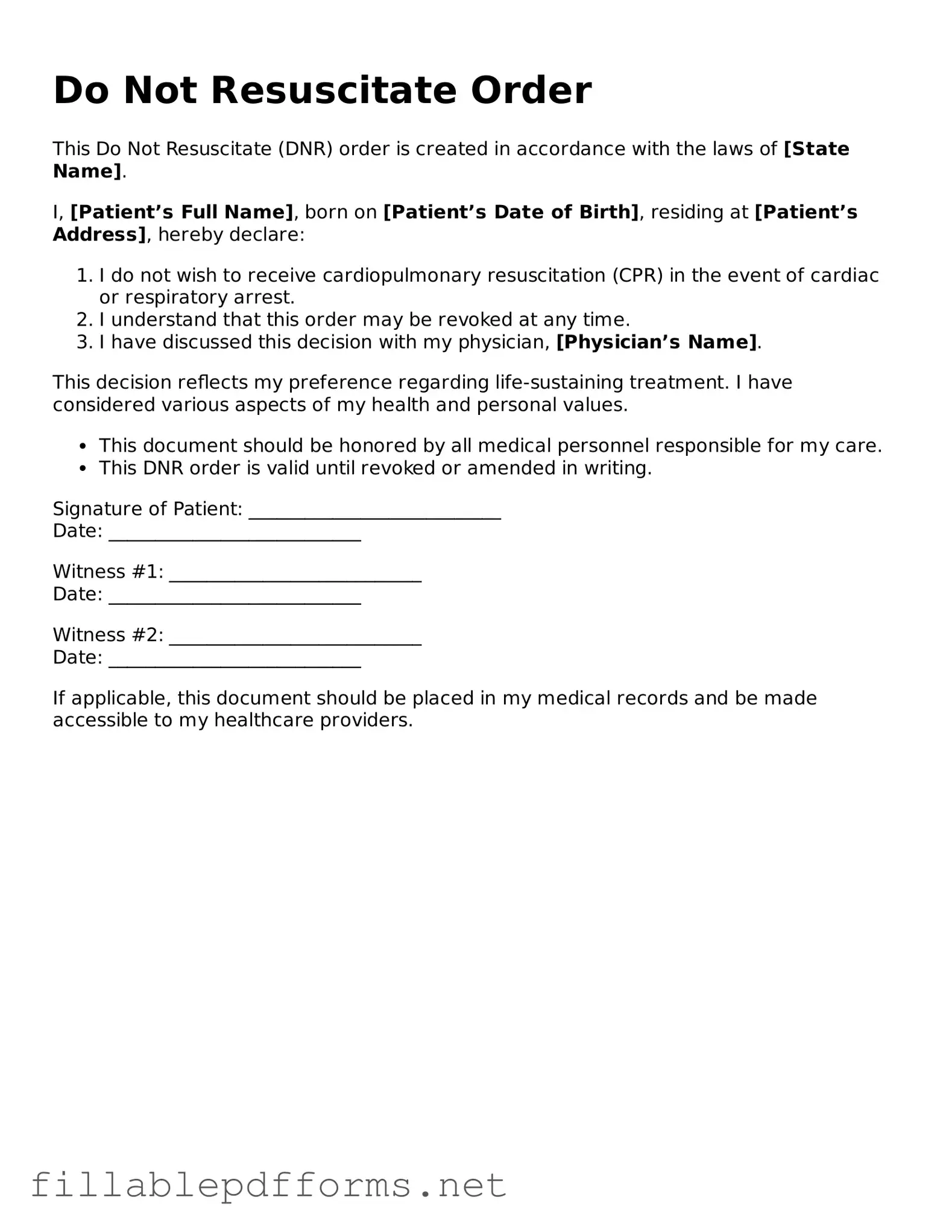When it comes to making decisions about medical care, especially at the end of life, the Do Not Resuscitate (DNR) Order form plays a crucial role. This document serves as a clear directive regarding a person's wishes concerning resuscitation efforts in the event of cardiac arrest or respiratory failure. It ensures that individuals can express their preferences about receiving or refusing life-saving measures, such as chest compressions or artificial ventilation. Understanding the DNR form is essential for patients, families, and healthcare providers alike, as it helps to facilitate conversations about end-of-life care and align medical interventions with personal values. The form typically requires the signature of a patient or their legal representative, along with a physician’s endorsement, to be valid. It is important to note that the DNR order can be revoked at any time, allowing for changes in a person's wishes as circumstances evolve. By familiarizing themselves with the DNR Order form, individuals can take proactive steps in ensuring that their healthcare preferences are respected and honored during critical moments.
